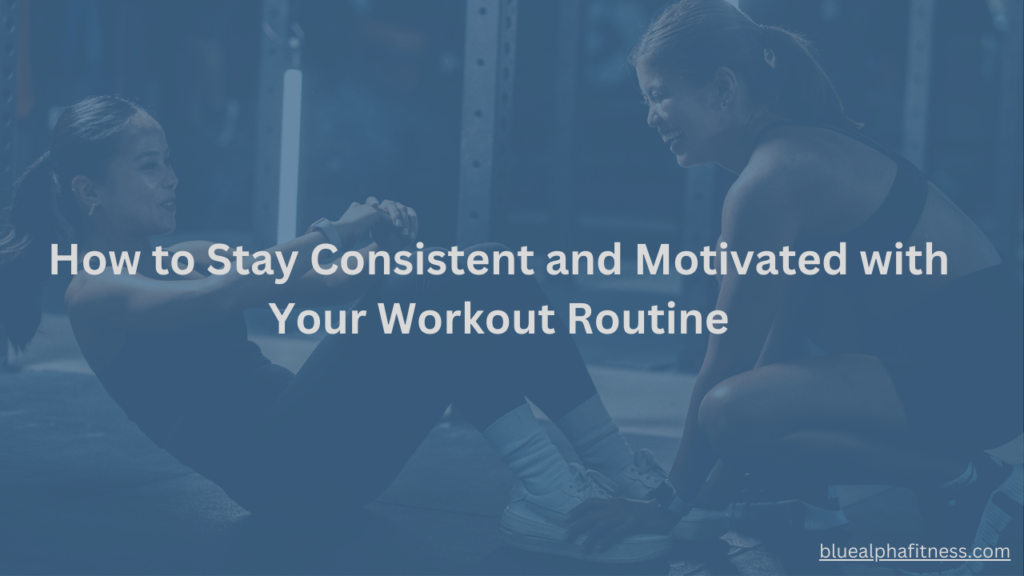Do your workouts feel unorganized and all over the map? Learning how to organize your workouts could be the key to finally seeing the results you deserve.
You’re sweating, lifting, pushing, but the effort doesn’t seem to match the outcome. It’s frustrating, right?
The truth is, it’s not about how much you’re doing—it’s about how you’re doing it. And that’s where organization steps in.
Here’s how to organize your workouts so you get the best results, fast: Start with clear goals, set a balanced weekly schedule, and plan your recovery days as carefully as your training days.
This structure will have you moving from random routines to focused, powerful progress.
In this guide, you’ll learn how to map out your week, balance strength with cardio, and avoid common workout traps that slow results.
Let’s begin.
How to Organize Your Workouts: Step-by-Step Guide for Optimal Results
To organize your workouts, start by setting clear fitness goals and assessing your current level. Then, create a balanced weekly schedule, include warm-ups and cool-downs, and prioritize rest days for proper recovery.
With these steps in place, you’ll have a structured plan that maximizes your effort and delivers results.
Here’s a detailed breakdown of the steps.
1. Define Your Fitness Goals
Before you even set foot in the gym or lace up your running shoes, you need to get crystal clear on what you’re working toward.
Are you trying to shed fat? Build muscle?
Maybe you’re aiming to boost endurance or simply feel stronger in your day-to-day life.
Whatever it is, you can’t just “work out”—you’ve got to know why you’re doing it.
Think about this: if you’re driving with no destination, how will you know when you’ve arrived?
It’s the same with fitness.
Without defined goals, your workouts may lack direction, and that can slow your progress. So, align your workouts with a purpose.
Here’s where SMART goals come in.
SMART stands for:
- Specific
- Measurable
- Achievable
- Relevant
- Time-bound.
Let’s say you want to lose weight.
A SMART goal would be something like, “I want to lose 10 pounds in three months by working out four times a week and eating 500 fewer calories per day.”
See how specific and clear that is? You know exactly what to do, how to track it, and how long it’ll take.
Goals that are too vague or unrealistic can leave you frustrated.
If you just say, “I want to get fit,” how will you measure that?
Instead, make your goals tangible and give them a timeline. This way, you’ll know whether you’re on track or need to adjust.
2. Assess Your Current Fitness Level
Now that you’ve set goals, it’s time to take a good, honest look at where you’re starting from.
Are you a fitness newbie or someone who’s been hitting the gym for years?
Your current fitness level will dictate what kind of workout plan makes sense for you.
Start with a self-assessment.
If you’ve been working out consistently, look at your personal records. How much can you bench press? How far can you run without stopping?
If you’re just starting, you might try some basic fitness tests like push-ups, planks, or timed runs to gauge where you stand.
But here’s something that might not seem obvious: it’s also crucial to recognize any physical limitations.
Maybe you’ve got knee pain or a shoulder that doesn’t move quite right. Ignoring those can lead to injury, so take them into account when organizing your workout plan.
It’s better to build around them than to push through and risk a setback.
Understanding your starting point is just as crucial as knowing your destination.
3. Choose Your Workout Days
Now, let’s talk about scheduling.
How often should you work out? This varies based on your fitness level and personal goals.
Beginners might start with 2-3 days a week. If you’re more experienced, 4-6 days could be ideal.
The key here is consistency.
You don’t need to work out every single day, but you need a regular pattern that you can stick to.
For example, if you want to build muscle and can only hit the gym three times a week, make those three days count by focusing on major lifts like squats, deadlifts, and bench presses.
On the other hand, if you’re aiming for fat loss, you might split your week between strength training and cardio.
One thing to keep in mind—workouts should fit into your life, not the other way around.
If you’re too ambitious and plan to work out six days a week but can barely make four, you’ll end up frustrated and burnt out.
Be realistic about your schedule, and don’t feel guilty about rest days. They’re part of the process.
4. Create a Balanced Workout Schedule
A balanced workout routine is like a good recipe—it needs the right mix of ingredients to work.
A healthy balance between strength training, cardio, and flexibility is the key to long-term success.
Let’s break it down.
- Strength training not only builds muscle but also revs up your metabolism.
- Cardio keeps your heart healthy and helps with fat loss.
- Flexibility exercises—like yoga or stretching—help with recovery and prevent injury.
As you organize your workouts, alternate between muscle groups.
A good approach is to split your workouts by focusing on different parts of your body on different days.
For example, you could have an upper body day, a lower body day, and a full-body day.
Another option is a push-pull-leg split, where you focus on pushing movements (like bench presses) one day, pulling movements (like deadlifts) another, and leg exercises the third.
Here’s a sample weekly schedule:
- Monday: Upper Body Strength
- Tuesday: Cardio (HIIT)
- Wednesday: Lower Body Strength
- Thursday: Active Recovery (yoga or walking)
- Friday: Full Body Strength
- Saturday: Cardio (steady-state)
- Sunday: Flexibility/Mobility
This keeps your muscles from getting overworked while giving you enough variety to stay engaged.
Plus, alternating workout types helps prevent burnout.
It’s about keeping things challenging but sustainable.
5. Incorporate Warm-Up and Cool-Down
Don’t skip this part!
Warm-ups and cool-downs might seem like a waste of time, but they’re essential to a successful workout.
Think of your body like a car engine. You wouldn’t go from 0 to 100 without revving it up first, right?
Your body needs the same treatment.
Before you dive into the heavy lifting or high-intensity cardio, spend at least 5-10 minutes warming up.
This could be light cardio or dynamic stretches that mimic the movements you’ll be doing during your workout.
For example, if you’re about to squat, you could do bodyweight squats or leg swings to wake up those muscles.
Cool-downs are just as important. After you’ve crushed your workout, your body needs time to transition back to its resting state. Cooling down helps lower your heart rate, prevents dizziness, and reduces muscle soreness.
Static stretching—where you hold stretches for 20-30 seconds—helps improve flexibility and can prevent tightness later. Foam rolling is another great option to work out any kinks or tight spots.
The little things you do before and after your workout can make a big difference in how you feel the next day.
6. Plan for Recovery and Rest Days
Rest isn’t just a luxury—it’s a necessity.
Your muscles don’t grow during your workout; they grow while you rest.
Pushing too hard can cause burnout, injuries, and even slow your progress. That’s why recovery days should be as carefully planned as your workout days.
Depending on how intense your workouts are, plan for 1-3 rest days each week.
Rest doesn’t have to mean doing nothing.
Active recovery, like going for a walk, swimming, or doing some yoga, can keep you moving while giving your muscles time to heal.
Sleep is another major player in recovery. It’s when your body repairs itself.
If you’re not getting enough quality sleep, you’re leaving gains on the table.
And remember, listen to your body.
If you’re feeling constantly sore or fatigued, that’s a sign you need more rest. Pushing through can cause more harm than good.
Why Is Workout Structure Important for Quick Fitness Results?
Having a workout structure is important because it enhances consistency, prevents injuries, and improves performance.
By sticking to a plan, you’ll build habits, reduce the risk of overuse injuries, and track measurable progress toward your fitness goals.
Let’s break down how structured workouts can elevate your fitness journey.
1. Enhances Consistency
Consistency is the secret sauce.
Showing up, week after week, is what transforms effort into results.
When you organize your workouts, you’re more likely to stick to them. Without structure, it’s easy to skip workouts or do random exercises that don’t build upon one another.
Structured workouts keep you accountable.
Knowing that Monday is upper body day and Wednesday is cardio takes the guesswork out of your routine.
When you know what to expect, it’s easier to build a habit, and habits lead to long-term progress.
2. Prevents Injuries
A disorganized workout routine can leave you more prone to injury.
If you’re doing random exercises without giving certain muscles time to recover, you risk overworking them.
Proper structure ensures you’re rotating muscle groups and avoiding overuse.
Plus, a well-planned schedule includes warm-ups and cool-downs, which protect your muscles and joints.
Skipping these can lead to strains or more serious injuries that take you out of the game for weeks—or even months.
3. Improves Performance
If you organize your workouts, you’re working toward a specific goal, which helps you keep progressing.
Over time, organized workouts allow you to track improvements.
You’ll know when you can lift heavier weights, run longer distances, or perform more reps because you’ve been consistent and strategic.
On the flip side, if you’re doing different exercises every week without a clear plan, you might be spinning your wheels without making any real progress.
Structure is the roadmap to measurable improvement.
Best Ways to Plan Your Weekly Workout Routine for Maximum Gains
The best way to plan your weekly workout routine for maximum gains is by balancing strength, cardio, and flexibility while giving your body enough rest.
Rotate muscle groups, keep things fresh, and stay consistent.

Here’s a quick breakdown to get you on track.
1. Sample Weekly Schedule
To get the most out of your workouts, you need a solid game plan that targets every aspect of fitness—strength, cardio, and flexibility.
Here’s a balanced weekly schedule that hits all the key elements while allowing for recovery and growth.
· Monday: Upper Body Strength
Focus on exercises like bench presses, rows, and shoulder presses.
Strength training early in the week allows you to hit upper body muscles when you’re fresh. This is great for building muscle mass and improving overall strength.
Alternative: If you don’t have access to weights, push-ups, resistance band rows, and pike push-ups can be great substitutes.
· Tuesday: HIIT Cardio
High-intensity interval training (HIIT) is a fantastic way to burn calories and improve endurance quickly.
This could include sprints, cycling, or bodyweight circuits.
HIIT keeps your metabolism revved up long after you’ve finished.
Alternative: If you’re not used to high intensity, try intervals of fast walking and jogging as a low-impact alternative.
· Wednesday: Lower Body Strength
Exercises like squats, lunges, and deadlifts will target major muscle groups in the lower body.
Working these large muscle groups helps boost metabolism and enhance muscle tone.
Alternative: Bodyweight squats, lunges, and glute bridges work well if equipment is limited.
· Thursday: Rest or Active Recovery
After three days of focused effort, your body needs a break.
Active recovery, like yoga or light stretching, improves flexibility and helps reduce soreness.
If you’re feeling particularly fatigued, opt for complete rest.
· Friday: Full Body Strength
Combine compound movements like deadlifts, kettlebell swings, or clean and presses to work multiple muscle groups simultaneously. This is perfect for building overall strength and coordination.
Alternative: Bodyweight moves like burpees, mountain climbers, and jumping lunges work well if you’re short on equipment.
· Saturday: Steady-State Cardio
Jogging, swimming, or cycling at a moderate pace for a longer period helps build endurance and burn fat.
Steady-state cardio is less intense than HIIT but plays a crucial role in cardiovascular health.
Alternative: If you’re short on time, try a brisk 20-minute walk or a light swim.
· Sunday: Flexibility/Mobility
Set aside time for foam rolling, deep stretching, or yoga.
Flexibility and mobility work helps reduce muscle tension and improve range of motion, which enhances your overall workout performance.
2. Customization for Different Fitness Levels
· Beginners
Start with 2-3 strength workouts per week and limit cardio to lower-impact exercises.
Gradually work up to more intense HIIT or strength sessions as your fitness improves.
· Intermediate/Advanced
For those with more experience, stick to 4-6 workout days, alternating between strength and cardio to maximize muscle growth and fat loss.
· Fat Loss Goals
Focus on higher-intensity strength and HIIT cardio to burn more calories. Incorporating more movement throughout the day (like walking) can also help.
· Muscle Gain Goals
Prioritize strength workouts and reduce the frequency of intense cardio, so you don’t burn out or lose the muscle gains you’re aiming for.
3. Rest and Recovery: The Hidden Key to Gains
Rest isn’t just a break—it’s when your muscles actually grow and get stronger.
After a tough workout, your body repairs the microscopic damage to your muscle fibers, making them stronger and more resilient.
Without proper rest, you risk burnout, overtraining, or injury, which will set you back instead of moving you forward.
To make the most of recovery:
- Include at least one full rest day per week, where you’re not engaging in intense physical activity.
- On active recovery days, do light activities like yoga, swimming, or walking to keep your body moving without added strain.
- Listen to your body! If you’re feeling sore or sluggish, that’s a sign you may need more recovery time. Skipping rest days will only lead to setbacks in the long run.
How to Organize Your Workouts: Balancing Strength Training and Cardio
To effectively balance strength training and cardio in your routine, organize your workouts to alternate between the two types of exercises throughout the week.
Prioritize strength for muscle gain and cardio for fat loss.
Finding the right mix keeps you strong, lean, and energized.
- Why bother to balance strength training and cardio?
Strength training and cardio seem like opposites, right? One’s about lifting heavy things; the other’s all sweat and endurance.
But guess what? They’re like peanut butter and jelly—they just work together.
Strength training builds muscle (which cranks up your metabolism), while cardio keeps your heart happy and helps burn fat.
The challenge? Getting the right balance without one stealing the show.
- Find the Sweet Spot
Too much cardio, and you’re sabotaging those muscle gains. Too little, and fat loss slows to a crawl. The magic is in the mix.
So, how do you nail it?
Here’s a plan to kickstart things.
Weekly Workout Blueprint:
- Monday, Wednesday, Friday: Strength training (Get stronger. Feel powerful.)
- Tuesday, Thursday, Saturday: Cardio (Crank up that heart rate. Feel alive.)
- Sunday: Flexibility or rest (because your body deserves a break!)
What’s Your Fitness Goal?
- More muscle? Double down on strength days. Keep cardio short—20-30 minutes tops. Focus on lifting heavy and building that muscle.
- More fat loss? Split it 50/50. Maybe stretch out your cardio sessions—think 45 minutes—but don’t skip the weights. You wanna torch fat, not lose muscle!
Common Mistakes in Organizing Your Workouts (And How to Fix Them)
Common workout scheduling mistakes include overtraining, skipping flexibility, and not tracking progress.
These missteps can lead to burnout, injuries, or stalled results.
But with a few adjustments, you can stay on track and keep improving.
Here’s how to avoid them:
1. Overtraining
More isn’t always better.
Overtraining happens when you push too hard, too often, with too little rest.
The result? Fatigue, irritability, and even backsliding in performance.
Want to avoid it? Stick to a balanced schedule with built-in rest days.
Your body requires time to rest and rebuild.
2. Skipping Flexibility and Recovery
Stretching and mobility work might seem boring, but they’re your injury insurance. Neglect them, and you’ll pay for it later.
Keep your muscles loose and your joints happy by adding a quick stretch or mobility session—aim for at least 10-15 minutes after workouts.
It’s not just about feeling good now—it’s about staying pain-free long term.
3. Not Tracking Progress
If you don’t track it, how do you know if you’re getting better?
Whether it’s an app, journal, or notes in your phone, log your workouts.
Track things like sets, reps, weights, and times.
It’ll show you where you’ve improved and when it’s time to step things up.
How to Track Your Workout Progress Effectively for Faster Results
To track your workout progress, you can log key metrics—like weights, reps, or miles—using apps, journals, or fitness trackers.
Set smaller checkpoints and celebrate your wins along the way.
Tracking your progress boosts motivation and accelerates your path to success.
Let’s break it down:
1. Methods of Tracking
Choose a tool that works for you—whether it’s a fitness app, journal, or tracker.
Log important details like weights, reps, or distance covered after each workout. This helps you stay consistent and see where you’re improving over time.
2. Setting Checkpoints
Break your big goals into smaller, more manageable steps.
If your target is to squat 200 pounds, aim for a checkpoint at 150 pounds within six weeks. Reaching these mini-milestones keeps you motivated and focused on the long-term goal.
Celebrate the small wins—they fuel progress!
3. Review Regularly
Every couple of weeks, review your logs to spot trends and adjust your workout routine as needed.
This helps you recognize areas where you’re improving and where you can push harder.
Regular reviews keep you on track and ensure you’re moving towards your fitness goals efficiently.
Should You Switch Up Your Workouts? When and Why It Matters
Yes, you should switch up your workout when progress stalls or you hit a plateau. Changing your routine helps prevent your body from adapting and boosts growth.
Mix up exercises, reps, or intensity every 4-6 weeks to keep making gains.

Let’s dive deeper:
1. Identifying Plateaus
At some point, you might notice that your progress has stalled. This is called a plateau, and it happens when your body adapts to your current workout routine.
Signs of a plateau include no changes in weight, strength, or endurance, despite consistent effort.
2. How to Change Your Routine
Switching up your exercises, reps, or even the order in which you perform them can shock your body into new growth.
If you’ve been doing low reps with heavy weights, try switching to higher reps with lighter weights for a few weeks, or add in new exercises you haven’t tried before.
3. Frequency of Changes
You don’t need to overhaul your routine every week, but a good rule of thumb is to make adjustments every 4-6 weeks.
This keeps things fresh and prevents your body from getting too comfortable.
How long should your workout plan be?
The ideal workout length depends on your fitness goals and experience level.
Strength workouts typically last 45-60 minutes, while cardio can be 20-40 minutes depending on the intensity.
But remember, it’s not just about time spent in the gym—it’s about making each minute count.
1. Quality Over Quantity
It’s not about how long you’re in the gym—it’s about what you’re doing while you’re there.
A focused 30-minute strength session with exercises like squats, deadlifts, and presses can be more effective than an hour of wandering between machines.
If you’re doing cardio, a 20-minute HIIT session can burn calories and build endurance faster than a longer, steady-state jog.
2. Tailor It to Your Goals
· For Strength Gains
Aim for 45-60 minutes of focused lifting with minimal distractions.
Keep rest periods short and your form tight to maximize gains.
· For Fat Loss
Incorporate 30-45 minute circuit workouts or 20-30 minute HIIT sessions to maximize calorie burn without spending hours in the gym.
· For Endurance
If cardio is your focus, a 20-40 minute session can boost stamina, but challenge yourself by gradually increasing intensity over time.
Can You Organize Workouts for Fat Loss and Muscle Gain Simultaneously?
Yes, you can organize workouts for fat loss and muscle gain simultaneously by balancing strength training, cardio, and nutrition.
Strength workouts help build muscle, cardio burns fat, and the right diet keeps everything on track.
Let’s break it down.
1. Understand Dual Goals
Losing fat while gaining muscle—body recomposition—is possible but takes careful planning.
You need the right mix of strength training, cardio, and nutrition to make progress.
It’s not easy, but with the right approach, you can hit both goals.
2. Structure the Plan
To burn fat while building muscle, focus on high-rep strength workouts combined with moderate-intensity cardio.
Alternate between the two throughout the week.
Here’s a simple weekly plan:
- Day 1: Strength training (full-body, high-rep)
- Day 2: Moderate-intensity cardio (e.g., 30-40 mins of jogging, cycling, or rowing)
- Day 3: Strength training (focus on compound lifts like squats, deadlifts)
- Day 4: Rest or light activity (stretching, walking)
- Day 5: Cardio (HIIT or moderate-intensity)
- Day 6: Strength training (upper/lower body split)
- Day 7: Rest
3. Think About Nutrition
Your diet plays a massive role in body recomposition.
You need enough protein (1.6-2.2 grams per kg of body weight) to build muscle, while maintaining a slight calorie deficit to burn fat.
Prioritize lean proteins, healthy fats, and whole grains.
- Protein is key for muscle repair—think chicken, fish, beans, or tofu.
- Don’t cut calories too low—you need to fuel your workouts to stay effective.
- Meal prepping can help keep your nutrition in check and prevent unhealthy snacking.
4. Don’t Forget Recovery
Recovery is just as important as training.
After intense workouts, your muscles need time to recover and repair.
Therefore, schedule in rest days and listen to your body—overtraining can actually slow down your progress.
Tips on How to Stay Consistent and Motivated with Your Workout Routine

To stay consistent and motivated with your workout routine, set realistic goals, find support, and add variety to your workouts.
Small wins keep you going, accountability helps you stay on track, and mixing things up prevents burnout.
Stay patient, and you’ll see long-term results.
Here’s a clear breakdown of what to do to keep you going.
1. Set Realistic Expectations
One of the biggest barriers to long-term success in any fitness routine is setting unrealistic expectations.
We’ve all been there—excited, eager, and thinking we’ll see results in a matter of weeks.
But fitness, especially goals like building muscle or losing fat, takes time.
Quick results are rare, and chasing them can lead to burnout, frustration, or injury.
Instead, set small, attainable goals along the way.
Celebrate those little victories—they’re what keep you going.
Progress can sometimes feel slow, but that doesn’t mean it’s not happening. Remind yourself that sustainable change happens gradually.
Here’s an insight that may seem counterintuitive: slow progress is better than rapid progress.
Why? Because it tends to last.
Fast results can be fleeting, and quick fixes often lead to quick relapses.
So, set a pace you can keep, not just for weeks, but for months and years.
2. Find Support
Fitness is often seen as a solo journey, but it doesn’t have to be.
Whether it’s a workout buddy, a personal trainer, or even an online community, having someone to share your progress with can make all the difference.
You’ll push each other, hold each other accountable, and, most importantly, stay motivated when things get tough.
If you’re someone who struggles to stay motivated after a few weeks, having someone to check in with can be the nudge you need to keep going.
And don’t be afraid to ask for help.
Whether it’s learning new techniques or staying consistent, having support makes a big difference in your long-term success.
3. Incorporate Variety
Routine is great, but doing the same thing over and over can get stale, both mentally and physically.
Your body adapts quickly, and if you don’t mix things up, progress can slow.
Incorporating variety into your workouts not only helps keep you engaged, but it also challenges your muscles in new ways.
Switch up your exercises, try a new class, or set different challenges for yourself.
For example, if you’ve been running on the treadmill for months, try adding a HIIT session or taking your run outdoors.
If you’ve been focused on strength training, throw in some yoga to improve flexibility and mental focus.
Variety keeps your workouts exciting and fresh, and that excitement fuels motivation. It’s the spice that makes fitness not only effective but also enjoyable.
FAQs on How to Organize Your Workouts: Your Top Questions Answered
Now, let’s answer the most common questions about how to organize your workouts to stay on track and achieve the best results.
1. How should you structure a workout routine?
You should structure a workout routine by focusing on a balance of strength, cardio, and rest. Each week, include exercises targeting all major muscle groups, with rest days for recovery.
2. How do you organize your workout exercises?
You can organize your workout exercises by starting with compound movements and ending with isolation exercises. This ensures you target large muscle groups first for maximum efficiency.
3. What is the best order of workouts?
The best order of workouts is to begin with a warm-up, followed by strength training, and finish with cardio or flexibility work. This sequence maximizes energy and performance.
4. How to format a workout plan?
You should format a workout plan by setting specific goals, choosing exercises that align with those goals, and scheduling sessions consistently. Keep track of progress to adjust as needed.
5. What is the best workout split?
The best workout split is one that divides your training into muscle groups across the week, such as push/pull/legs. This allows for targeted recovery and optimal muscle growth.
6. What body parts to work on what days?
You should work on major muscle groups like chest, back, and legs on separate days, leaving time for recovery. A common split is chest on Monday, back on Tuesday, and legs on Wednesday.
7. How should I workout each day?
You should workout each day with a focus on specific muscle groups or fitness goals, alternating between strength and cardio. Include warm-ups, strength work, and a cool-down.
8. Which body part should I workout first?
You should workout larger muscle groups like legs or back first, as they require the most energy. This ensures you can lift heavier and make more progress.
9. How to set up a workout plan?
You should set up a workout plan by deciding on your fitness goals, selecting exercises for each major muscle group, and scheduling consistent workout days. Review and adjust weekly.
10. How to split up workouts?
You can split up workouts by alternating muscle groups each session, such as upper body one day and lower body the next. This prevents overtraining and promotes recovery.
11. In what order should I workout?
You should workout in a sequence that prioritizes strength before cardio. Start with weight training and finish with conditioning or flexibility work.
12. How do I organize my gym sessions?
You can organize your gym sessions by grouping exercises based on muscle groups and scheduling warm-ups, workouts, and cool-downs. Track progress and adjust weekly.
13. How do I start a gym routine for beginners?
You should start a gym routine for beginners by focusing on full-body workouts, using basic exercises like squats and push-ups. Keep sessions short and gradually increase intensity.
14. How can I balance strength training and cardio in my routine?
You can balance strength training and cardio by alternating them throughout the week, focusing on strength first and cardio after. This ensures muscle growth while improving endurance.
15. What factors should I consider when creating a personalized workout schedule?
You should consider factors like fitness goals, recovery time, and exercise preferences when creating a personalized workout schedule. This ensures a balanced and sustainable plan.
How to Organize Your Workouts: Final Word
By now, you’ve got everything you need to break free from the workout chaos and start seeing real, tangible results.
Maybe you’ve felt unsure in the past, wondering if you’re doing things right or why progress seemed so slow. But now, you’ve got the tools to fix that.
Organizing your workouts is the game changer you’ve been waiting for.
From setting clear goals to structuring your week with intention, every step you take gets you closer to the body and performance you want.
You’re in control now.
This isn’t just about getting by—it’s about thriving and finally feeling the results you’ve been working for.
So, let’s go. You’ve got the knowledge, the plan, and the motivation.
Now, make it happen.
Your goals are within reach—let’s crush them!



